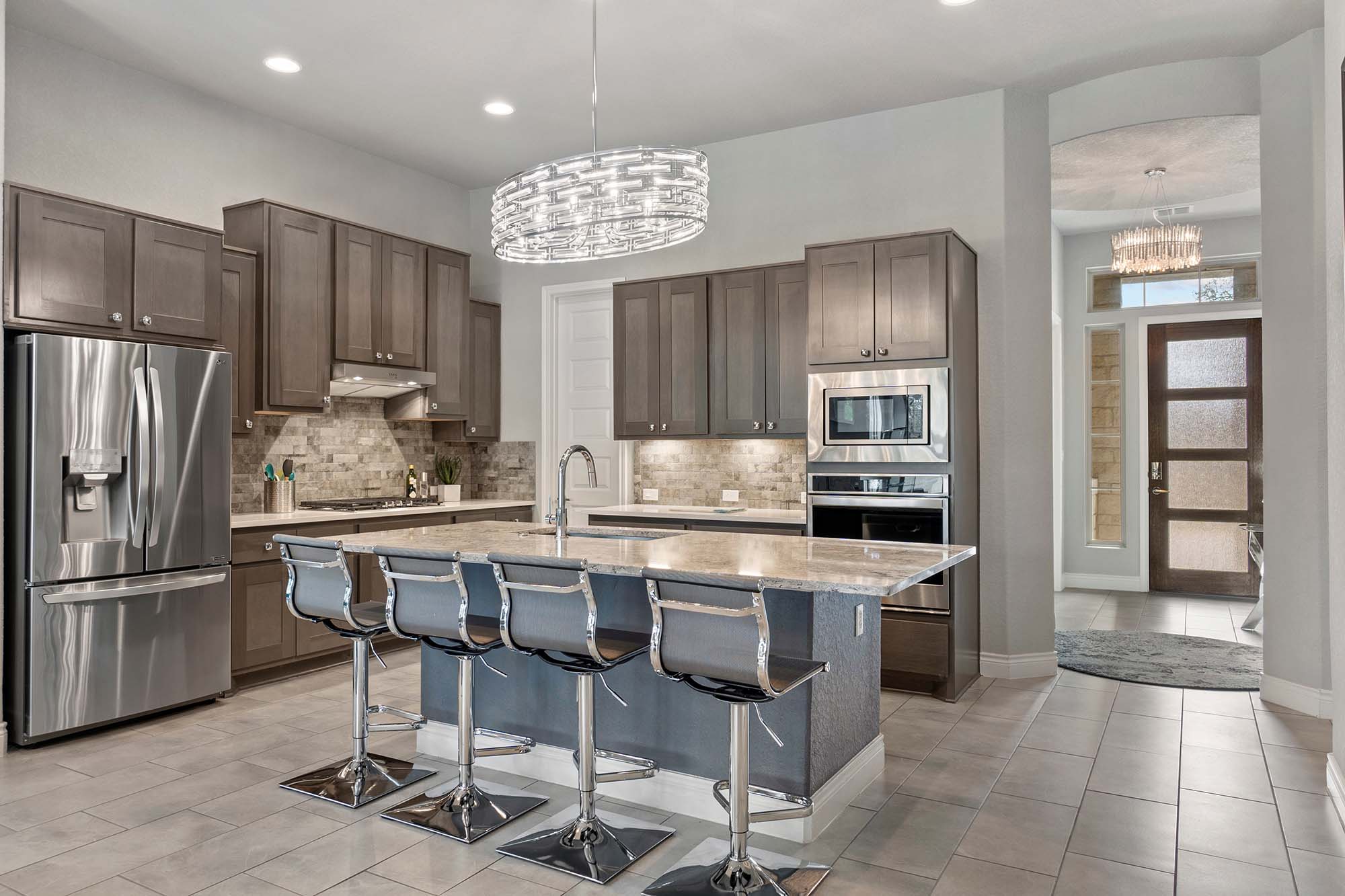Laminate vs. Tile Flooring: Which is Right for Your San Antonio Home?
Choosing the ideal flooring for your San Antonio home is a significant decision, influencing aesthetics, functionality, and long-term value. Among the popular hard surface options, laminate and tile flooring frequently come up in discussions, each offering distinct advantages and considerations. At O’Krent Floors, with over 104 years of dedicated service in San Antonio and surrounding areas like New Braunfels, Boerne, and The Hill Country, we understand that selecting the right floor means aligning it with your lifestyle, budget, and the specific demands of the Texas climate.
Let’s delve into a comprehensive comparison of laminate and tile flooring to help you make an informed choice for your home.

Understanding the Fundamentals: Laminate and Tile
Before we weigh the pros and cons, let’s clarify what each type of flooring entails.
Laminate Flooring: Engineered for Versatility
Laminate flooring is a multi-layered synthetic product designed to mimic the appearance of natural materials like wood or stone. It typically consists of a base layer for stability, a core layer (often high-density fiberboard or HDF), a high-resolution photographic image layer that replicates the desired pattern, and a transparent, protective wear layer on top. Modern advancements have significantly improved its realism and durability.
Tile Flooring: Durable and Diverse
Tile flooring encompasses a wide range of materials, primarily ceramic and porcelain. These are made from clay, sand, and other natural materials, then shaped and fired at high temperatures. Porcelain tile is a type of ceramic tile fired at even higher temperatures, making it denser, less porous, and more durable. Tile is known for its incredible versatility in design, offering endless colors, patterns, and sizes, from mimicking wood and stone to abstract designs.
Head-to-Head Comparison: Factors for San Antonio Homes
Now, let’s explore how laminate and tile stack up against each other, with a focus on considerations relevant to homeowners in San Antonio and the wider Bexar County area.
1. Durability and Wear Resistance
- Laminate:
- Pros: Its robust wear layer makes laminate highly resistant to scratches, dents, fading, and general wear from daily foot traffic. This is a significant advantage for busy households, especially those with kids and pets. Many laminates have AC ratings (Abrasion Class) indicating their durability, with higher ratings signifying greater resistance.
- Cons: While durable, it cannot be refinished like hardwood. If the wear layer is severely damaged or the core swells due to moisture, the affected planks typically need replacement.
- San Antonio Relevance: Excellent for high-traffic areas and active families where resilience against scuffs and minor impacts is crucial.
- Tile:
- Pros: Extremely durable and hard-wearing. Porcelain tile, in particular, is renowned for its exceptional hardness, making it resistant to scratches, chips, and heavy impacts. It can last for decades with proper maintenance.
- Cons: While the tile surface is hard, dropping heavy objects can cause chipping or cracking. Grout lines, being porous, can stain and degrade over time if not sealed and maintained.
- San Antonio Relevance: Ideal for very high-traffic areas and commercial spaces due to its superior long-term resilience.
2. Water Resistance and Moisture Management
This is a crucial factor, particularly for San Antonio’s humid climate and areas prone to spills.
- Laminate:
- Pros: Traditionally, laminate has been vulnerable to water damage if moisture penetrates its HDF core, causing swelling. However, significant advancements have led to water-resistant and even fully waterproof laminate options. These products feature enhanced core materials (like plastic composites) and tighter locking systems that prevent water ingress for extended periods, or even indefinitely for waterproof versions.
- Cons: Older or basic laminates are still susceptible to water damage. Even advanced water-resistant versions require prompt cleanup of spills to prevent issues over time.
- San Antonio Relevance: For kitchens, bathrooms, laundry rooms, or basements, opting for a certified water-resistant or waterproof laminate is essential to withstand spills and potential humidity.
- Tile:
- Pros: Both ceramic and porcelain tiles are inherently highly water-resistant, and porcelain is practically impervious to water. This makes tile an excellent choice for any area where water is present, including showers, bathrooms, kitchens, and outdoor applications (for certain frost-resistant types).
- Cons: While the tile itself is waterproof, the grout lines are porous and can absorb water, leading to staining, mold growth, or efflorescence if not properly sealed and maintained.
- San Antonio Relevance: The go-to choice for high-moisture environments, offering unparalleled protection against water damage, which is a common concern in a humid climate.
3. Comfort and Sound
- Laminate:
- Pros: Generally softer and warmer underfoot than tile, especially when installed with an appropriate underlayment. The underlayment also helps with sound absorption, reducing hollow sounds.
- Cons: Can sometimes have a slightly hollow sound, especially thinner products, if not installed with proper underlayment.
- San Antonio Relevance: More comfortable for standing for long periods in kitchens or living areas compared to tile.
- Tile:
- Pros: Provides a very solid, stable feel underfoot. Excellent for radiant heating systems.
- Cons: Can feel cold and hard underfoot, particularly in cooler months (though less of an issue in San Antonio’s heat). It is a very unforgiving surface for dropped items and falls. It also tends to amplify sound, creating a noisier environment.
- San Antonio Relevance: Its natural coolness can be a benefit during hot Texas summers, but the hardness and sound amplification should be considered.
4. Aesthetics and Design Versatility
- Laminate:
- Pros: Offers an incredible array of realistic visuals, mimicking various wood species, stone patterns, and even abstract designs. Advanced printing and embossed-in-register (EIR) textures create stunningly authentic looks.
- Cons: While highly realistic, it is still an imitation. It lacks the unique natural variations and depth of genuine wood or stone.
- San Antonio Relevance: Allows homeowners to achieve high-end wood or stone looks at a more affordable price point, fitting diverse design preferences.
- Tile:
- Pros: Unmatched design versatility. Available in an infinite range of colors, patterns, sizes, shapes, and textures. Can mimic wood, stone, fabric, and abstract designs. Offers a sense of permanence and classic appeal.
- Cons: Can sometimes feel too cold or industrial for certain design aesthetics if not balanced with warm elements.
- San Antonio Relevance: Provides endless creative possibilities for unique designs, from traditional Spanish colonial to modern minimalist.
5. Cost and Value
- Laminate:
- Pros: Generally more budget-friendly than tile, especially considering material and installation costs.
- Cons: Does not typically add the same perceived resale value as high-quality tile or genuine hardwood.
- Tile:
- Pros: Material costs can vary widely from very affordable ceramic to premium porcelain. Installation costs can be higher due to labor intensity. It is generally considered a premium upgrade, adding significant resale value due to its durability and timeless appeal.
- Cons: Can be more expensive overall than laminate, especially for complex installations or high-end materials.
6. Maintenance and Repair
- Laminate:
- Pros:Very easy to clean with sweeping, vacuuming, and damp mopping. Resists staining well.
- Cons: Cannot be refinished. If a plank is severely damaged (e.g., core swelling), it often needs individual replacement, which can be challenging to match.
- Tile:
- Pros: Very easy to clean the tile surface. Highly stain-resistant (for the tile itself).
- Cons: Grout lines require more diligent cleaning and periodic sealing to prevent staining and mold. If a tile chips or cracks, it requires professional replacement, which can be difficult to match.
Final Decision for Your San Antonio Home
- Choose Laminate if: You need a highly durable, scratch-resistant, and more budget-friendly option that mimics wood or stone well. It’s excellent for active households with kids and pets, or if you need enhanced water resistance without the higher cost of tile.
- Choose Tile if: You prioritize ultimate water resistance, extreme durability, a vast array of design options, and don’t mind a harder, cooler surface. It’s ideal for bathrooms, kitchens, entryways, and any area where spills and moisture are a constant concern, and you seek long-term, high-value flooring.
At O’Krent Floors, we pride ourselves on our 110 years of continued business and success, built on principles of quality and service. Our experienced team is here to guide you through our extensive collections of both laminate and tile, ensuring you make the perfect choice for your San Antonio home.
Visit the Flooring Experts at O’Krent Floors in San Antonio, Texas
The choice between laminate and tile flooring is a significant one for your San Antonio home, with each offering distinct advantages in terms of durability, water resistance, comfort, and aesthetics. By carefully weighing these factors against your lifestyle, budget, and the specific needs of each room, you can make an informed decision that ensures lasting beauty and functionality.
Call or Visit O’Krent Floors! We have a showroom location in San Antonio, TX. We service the areas of New Braunfels, Boerne, Bexar County, Hill Country Village, Canyon Lake, Shavano Park, Helotes, Bulverde, and Spring Branch. We are proud of our company’s 110 years of continued success and serving those in the Greater San Antonio, Texas area. We are excited to help you find the best flooring options for every space.
